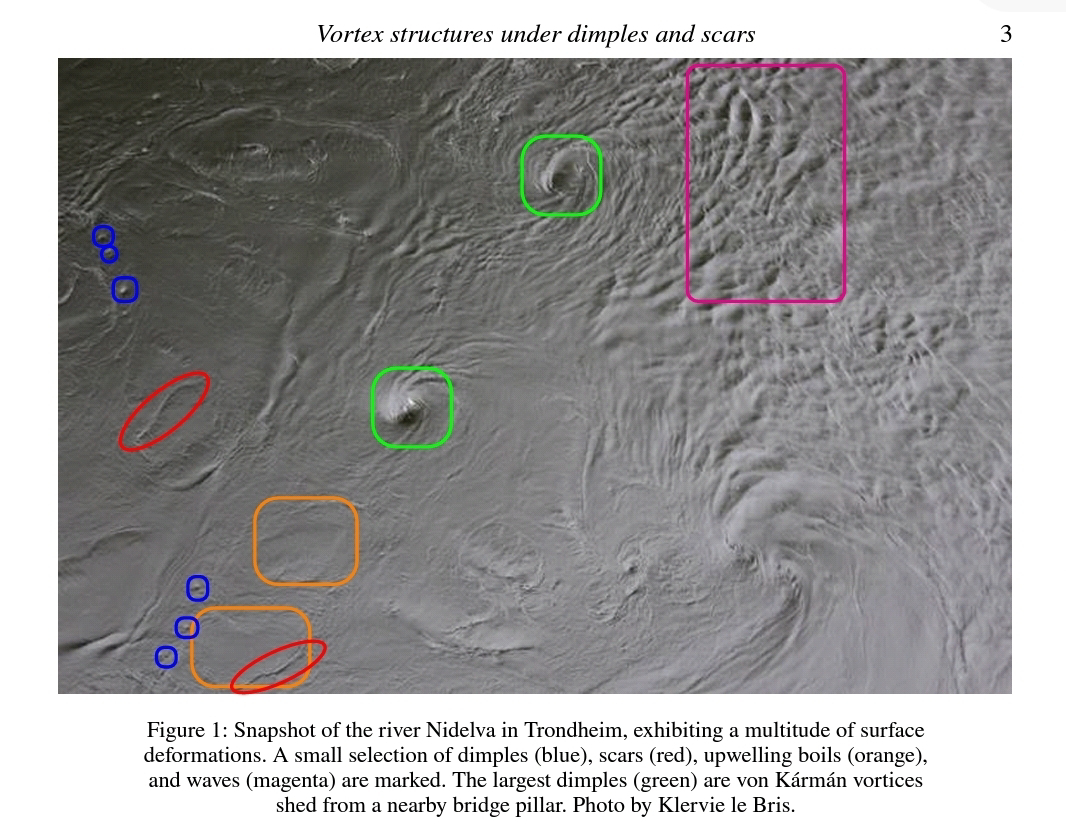<< Turbulence beneath a free surface leaves characteristic long-lived signatures on the surface, such as upwelling 'boils', near-circular 'dimples' and elongated 'scars', easily identifiable by eye, e.g., in riverine flows. >>️
AA << explore the connection between these surface signatures and the underlying vortical structures. We investigate dimples, known to be imprints of surface-attached vortices, and scars, which have yet to be extensively studied, by analysing the conditional probabilities that a point beneath a signature is within a vortex core as well as the inclination angles of sub-signature vorticity. >>️
<< The analysis shows that the likelihood of vortex presence beneath a dimple decreases from the surface down through the viscous and blockage layers in a near-Gaussian manner, influenced by the dimple's size and the bulk turbulence. When expressed as a function of depth over the Taylor microscale λT, this probability is independent of Reynolds and Weber number. >>️
<< Conversely, the probability of finding a vortex beneath a scar increases sharply from the surface to a peak at the edge of the viscous layer, at a depth of approximately λT/4. Distributions of vortical orientation also show a clear pattern: a strong preference for vertical alignment below dimples and an equally strong preference for horizontal alignment below scars. >>️
AA << findings suggest that scars can be defined as imprints of horizontal vortices approximately a quarter of the Taylor microscale beneath the surface, analogous to how dimples can be defined as imprints of surface-attached vertical vortex tubes. >>
Jørgen R. Aarnes, Omer Babiker, et al. Vortex structures under dimples and scars in turbulent free-surface flows. arXiv: 2409.05409v1 [physics.flu-dyn].
9 Sep 2024.
Also: vortex, turbulence, waves, bubble, drop, transition, in https://www.inkgmr.net/kwrds.html
Keywords: gst, vortex, turbulence, waves, bubble, drop, transition

Nessun commento:
Posta un commento
Nota. Solo i membri di questo blog possono postare un commento.